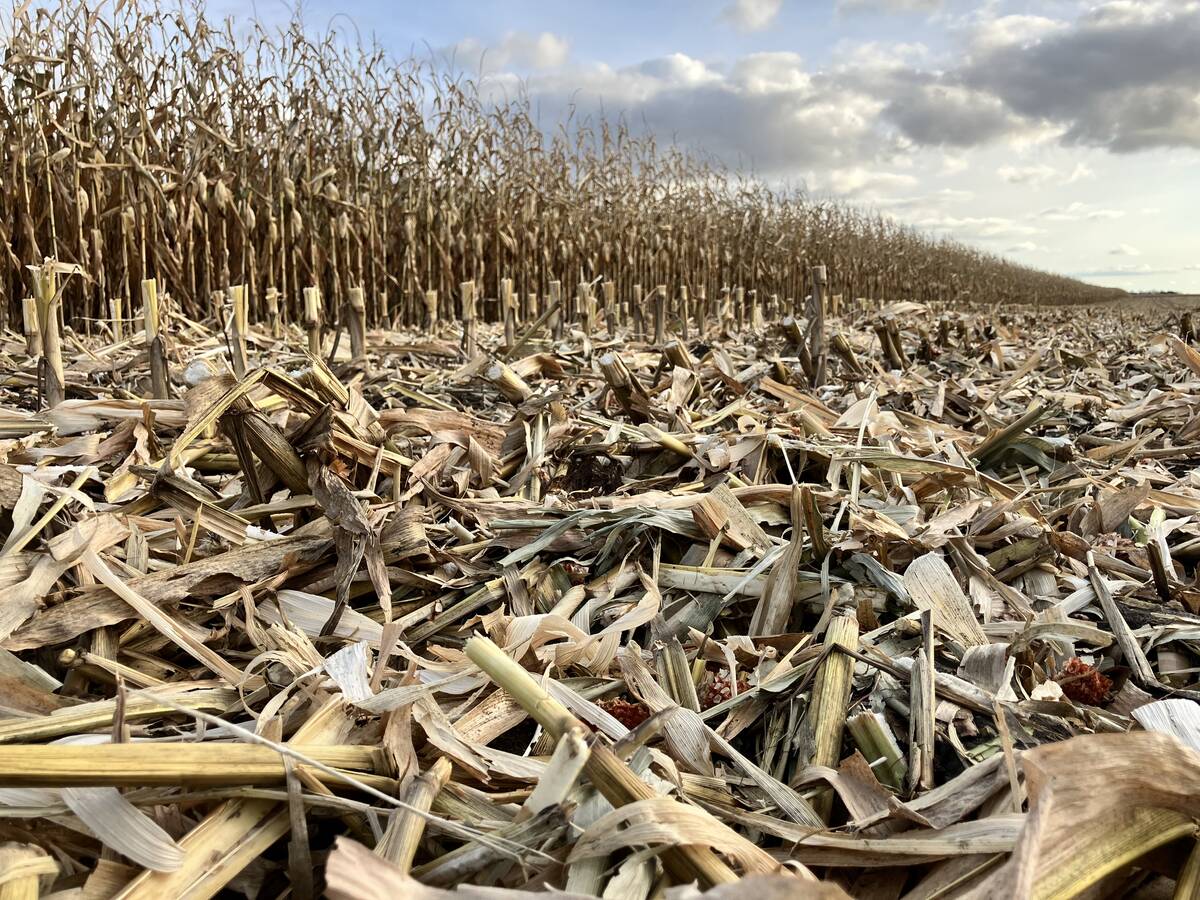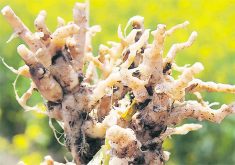It looks like clubroot is moving just a bit differently in Manitoba and that could be good news for producers trying to slow or stop its spread.

Bruce Gossen, a research scientist with Agriculture and Agri-Food Canada (AAFC), told the Manitoba agronomist conference earlier this winter there’s a clear pattern in the other Prairie provinces that’s not present in the Keystone province.
In Alberta, clubroot is showing up a lot at field entrances. An Alberta study showed that 90 per cent of the fields where clubroot was found was at the field entrance, which reflects that in Alberta it is primarily being spread on equipment.
It’s a similar pattern in Saskatchewan, where clubroot is showing up at field entrances, and in areas where water pools temporarily around grain bins and access routes to power lines or oil sites where there are vehicles coming and going.
Read Also

Corn yields surprise Manitoba farmers
StatCan said Manitoba had a fantastic 2025 corn crop, but yields were highly variable with some hitting 200 bu./acre, while others were closer to 100 bu.
The situation in Manitoba is different, because clubroot is showing up in places that are conducive to the development of the disease like low spots or along drainages in fields, he said.
“This probably reflects the fact that, at this point, most of the spores are coming in as airborne spores, and being washed into and concentrated in some areas, where you are getting hot spots of infection,” said Gossen.
Why it matters: Manitoba canola producers still have a window to prevent the disease from spreading like wildfire as it has in other locations.
As the disease becomes more established in more fields the transmission pattern will likely be more similar to Alberta, when it will be transported on equipment and vehicles moving from field to field, but in the meanwhile, producers might be able to help slow its spread.
“Most of the strategies for reducing spore concentrations are extremely expensive to do on a field basis, but if you catch it early there’s an opportunity for growers to minimize the movement of soil out of those patches and then fix the patch in place,” said Gossen.
Quickly moving
Clubroot is spreading fast in Alberta and Saskatchewan, and heading slowly but surely eastward into Manitoba, especially in canola-intensive areas.
The reason that clubroot has spread so quickly across the Prairies is because canola is a highly susceptible crop that is grown in large quantities, producing quadrillions of spores in heavily infested fields. As well, in a lot of the areas where clubroot is a problem, producers have short cropping rotations, which create high disease pressure and encourage the development of new types of pathogens.
When Manitoba canola growers first encounter clubroot it’s likely going to be a small patch in a field with stunted plants, delayed maturity and weeds coming through.
“My guess is those growers will see it from a swather and often by the time you see them in a spot like that you are looking at fairly good-size clumps because the symptoms are fairly advanced,” said Gossen. “These have been there for a while.”
It’s not likely that clubroot will be mistaken for other diseases or herbicide damage, adds Gossen.
“The young clubs are often quite a light colour and as they mature to brown almost black. They are so disorganized and disrupted they quickly break down so even though the plants are still standing in the field before swathing you can sometimes pull up a plant and the roots have turned to dust,” said Gossen. “That dust is pathogen spores and there are billions of spores in a single plant.”
High spore levels in soil are a huge problem because it leads to resistance breakdown.
“It also overwhelms cultural strategies like liming, biological controls and even partial resistance and the spores can survive in soil for a long time,” Gossen said.
It’s also difficult to measure the amount of spores in soil.
“It’s highly variable from place to place and there’s so much else in the soil that creates problems for measurement,” he said.
The spores latch on to soil practices very rapidly and are moved by wind, water and in Alberta primarily in soil that is on farming equipment.
Environmental conditions are the biggest factor in disease development, with clubroot favouring warm, moist conditions because the zoospores of clubroot have to swim to get to the plant. The pathogen can also survive in soil for a long time until it gets moisture.
Keep in check
The most important thing to remember is that no single approach is effective on its own.
“You can’t just use a resistant cultivar and call it a day,” said Gossen.
There are some good resistant canola varieties available that work well until there is high disease pressure which is beginning to break down resistance.
“Breeders are developing new resistant cultivars, but 12 new pathotypes have been identified so far, so it’s hard for the breeders to keep up with the range of pathogens out there,” said Gossen.
Seed treatments are ineffective against clubroot, but there are some alternatives to genetic resistance that look promising like liming, fumigation and solarization, but they are all expensive and still at the experimental stage.
Decontamination of equipment and vehicles comes first; scraping off mud, washing and cleaning equipment is vital.
“Keeping the disease out is a really high priority,” Gossen said. “Every little bit that you can do towards removing dirt between fields is going to reduce clubroot problems in the long term,” said Gossen.
Generally, clubroot favours acidic soils (with a pH lower than 6.5) and a pH of 7.2 or higher, inhibits spore germination and disease development, but not always.
“When you look at it under controlled conditions, the relationship, although strong, in terms of disease is not immutable, so even at a very high pH like eight, when the conditions are good in terms of moisture and temperature, infection still happens at a high rate,” said Gossen.
There has been some experimental work done in Alberta with surface applications of hydrated lime to try and raise pH and it does appear to work. But at $1,000 per ton, liming is not cheap and is only feasible for small patches.
Gossen’s research hasn’t found much connection between soil type or organic matter content in terms of clubroot development, but compaction is a big factor.
“Where soil is compacted, moisture stays in the soil surface a lot longer and lets the zoospores swim,” he said. “In a field situation, sandy soil will drain faster and so likely is a little bit less at risk but even in a dry area, a sandy soil can get a three-day rain and you don’t even need three days for this pathogen to get going.”
Crop rotation can have a big effect on clubroot. Graduate students working on a site in Quebec found that after a two- to three-year break from susceptible canola in the rotation, spore levels dropped by 92 and 99 per cent. “But 10,000 spores is enough to create 100 per cent disease in a susceptible crop, so it’s effective but just like wild oats, crop rotation alone is never going to get you completely out,” Gossen said.















